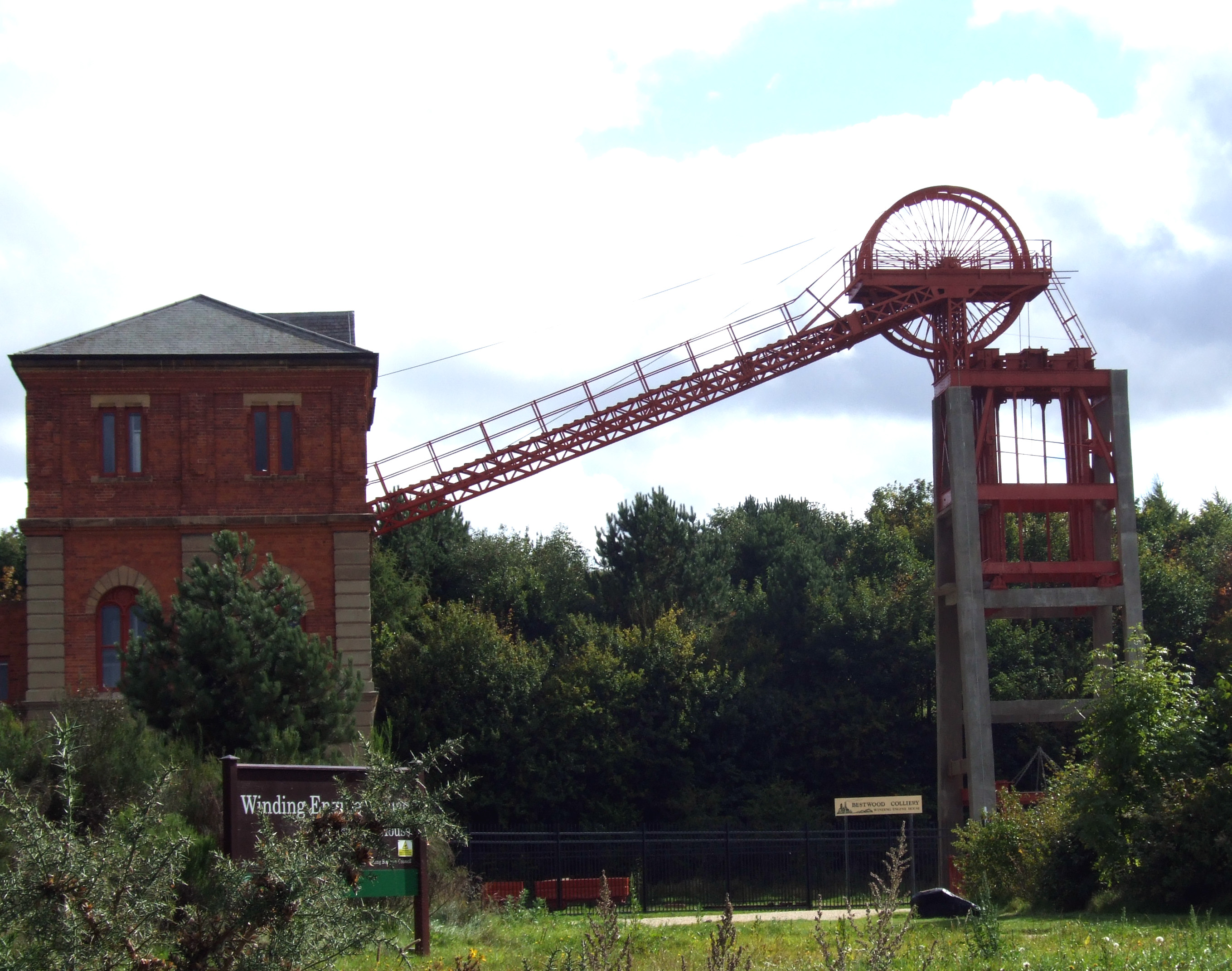Bestwood Colliery (1971 – 1967)
Bestwood was the first major coal mine sunk in the borough. Two shafts 5.5m (13¼ feet) in diameter and 55m (60 yards) apart were sunk to a depth of 378.5m (1,242 feet), reaching the Top Hard seam, which averaged 1.8m (6 feet) thick. The instigators were the Lancaster family, mining entrepreneurs from Scotland. Shaft-winding used steam engines with 36-inch diameter cylinders; the ventilation fan, also steam-driven, used an engine recovered on the bed of the Mediterranean Sea from the Royal Sovereign steamship.
Bestwood was always profitable and miners there earned good wages. It was the first coal mine in the world to produce a million tons of saleable coal in a single year. This was at a cost of more than a hundred lives, commemorated on a plaque in the engine house. By the 1930s, the Top Hard workings extended so far from the shaft that it was decided to sink another at Calverton, for ventilation and to transport men to their work more easily. This second shaft was completed and operational in 1939. After a drift was constructed from Bestwood to the High Main Seam in 1946, efficiency improved. Mining finished at the colliery in 1967, although coal was brought underground from nearby Linby colliery for a further two years.
A winding house, headstocks and engine are all preserved in working order at the site of the mine. Visits are available free of charge from 10 to 12 every Saturday morning as well as on Sundays in the summer months. The restored spoil tips from the colliery now form part of Bestwood Country Park.


